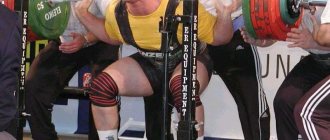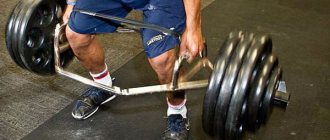Sprint running is an extremely dynamic and “edgy” sport. It has gained enormous popularity thanks to the intensity of passions that rages in the stadium in the intense struggle of the runners. Victory is literally snatched from your hands, and everything is decided by some centimeters and fractions of seconds won from your opponents. But, besides professional competitions, anyone can do sprint running. Fast sprinting has many advantages and has enormous benefits for the body.
Safety precautions: how to run long distances
The beginning of spring is a time filled with sporting events such as races and marathons. After preparing for them and numerous training sessions, it is important not only to show a good result, but also not to forget about safety precautions. We talk about it in more detail and list 10 points that need to be taken into account before, during and after a long run.
— Assess your physical fitness
Running a marathon sounds nice, with a hint of heroism. Without which, let’s face it, the participants of such a competition cannot do without it – it’s just not possible to run 42 kilometers. It is believed that a half marathon requires active training for 2-3 months, and a marathon - for at least 4.
This is a big load for the body, so both the volume of training and the distances you cover must be increased gradually. But don't get too carried away, especially if there are a couple of weeks left before the competition.
Attention!
During this period, on the contrary, you need to reduce the intensity of your training, otherwise by the day of the race your body will be exhausted. While training, monitor your well-being - malaise and pain cannot be left unattended, as in the future they can “grow” into injury.
Ideally, overcoming long distances like half marathons and marathons should be a logical continuation of a long passion for running and regular training. This is what can give a runner proper physical preparation.
“People who decide to increase their endurance need to adhere to a certain regime - in particular, regularly train,” says Elena Govorova, Herbalife fitness expert, Olympic bronze medalist in the triple jump. — It is important to recover after classes.
The isotonic protein-carbohydrate drink “Increasing Endurance” HERBALIFE24 copes best with this task - this drink provides energy to effectively continue training, provides protein and restores water-salt balance.
And also eat a balanced diet - the result of your work in training largely depends on what kind of diet you have.”
— Make sure you know the technique of “long” running perfectly
If you move incorrectly during short runs, you are at high risk of injury. If you also ignore the technique of running over long distances, then injury is practically unavoidable. Therefore, you need to know well exactly how to run, so as not to ruin your health along the way.
On topic: Breathe through your nose or mouth when running
https://youtu.be/9S9GaJw3dp0
Every part of the body must be under control. Let's start with the head - it should look straight, not at the legs. Relax your shoulders and lower them, keep your back straight, do not bend it forward or slouch. Hands are a particularly important point. Bend them slightly and be sure to help yourself with them while running when it comes to long distances.
It is the forward and backward movements of the arms that allow you to gain greater speed and run more easily and freely. The movements of your feet should be soft, you don’t need to slap them with each step as if you were hitting the asphalt with your feet.
This is dangerous, so step carefully with your feet and remember that the wide part of the foot should land first and only then the heel.
— Spend the day before a long race correctly
Important!
The day before the competition should help you and your body get ready for the challenge ahead. The first thing you need is rest. If the race is preceded by an exhausting working day, nothing good will come of it. The second is energy, and it is better for the body to extract it from “complex” carbohydrates.
Third is sleep. Don't allow yourself to go to a race without enough sleep. Healthy sleep will give the body the strength it needs for a long run.
Also, in general, try to avoid any stress and tension because the rigors of a long run are not easy to cope with without inner peace and self-confidence.
As for the morning before the race, it should also be spent with benefit for the body. “For example, it is important to wake up 3 hours before the start - this will allow you to feel in working condition,” says Elena. — And just before the start, don’t forget about warming up.
You should start with a 5- or 7-minute jog at a calm pace. Next, move on to flexibility exercises: these are rotational movements in the ankle, knee and hip joints, arm swings, and lateral bends. Also perform two or three accelerations of 30-60 meters.
Finish your warm-up a few minutes before the start of the race to prevent your body from “cooling down.”
- Choose suitable clothes and shoes
Properly selected shoes are of great importance for a runner. It should be comfortable and match the running style of its owner.
Under no circumstances should you put on a new pair of sneakers - your feet can wear out until they bleed even in your usual shoes, but in a new pair, according to the experience of most marathon runners, this will definitely happen and, most likely, already in the first kilometers of the distance.
Advice!
As for clothing, if possible, you need to choose things with a minimum of seams - during a long run they can chafe, and the pain caused by this will complicate the already difficult task of reaching the finish line.
- Don't forget about water and food
Over a multi-kilometer distance, runners cannot do without food and drink. They take several tubes of sports energy gels with them to the start and “recharge” every half hour after completing the first 10 kilometers.
You can also eat other foods: dried fruits and nuts, as well as various energy bars.
It is extremely important to drink water - prolonged and exhausting physical activity depletes water reserves in the body, and this is very dangerous because it can cause problems with the body's cooling mechanisms, which puts you at risk of overheating.
Water-salt balance can also be maintained with special drinks; Elena Govorova recommends, for example, the drink H3O Pro or “Hydration” from the HERBALIFE24 line: “I drink the hypotonic drink “Hydration” H24. Thanks to sodium, calcium and magnesium salts, it effectively replenishes the loss of fluid and electrolytes. The drink contains B vitamins, which promote optimal metabolism, and vitamin C to reduce fatigue.”
- Run at a comfortable pace
The optimal running rhythm for a particular athlete is developed during training. A comfortable, familiar pace must be maintained during the competition.
Even if you strive to show a good time result, do not try to “squeeze” maximum speed out of yourself. This is especially important in the first kilometers after the start. They are usually the easiest for runners.
Full of strength, they strive to speed up, but there is no need to do this, because this surge of strength after some time will be replaced by their decline - at the end of the distance it will be almost impossible to maintain the speed set at the beginning.
Attention!
Save your energy and run so as not to experience any discomfort, and also, don’t think about time. “If you think about time, you will lose your running pace. Today it’s important to run and enjoy running,” says Elena.
- Breathe
It is undesirable to change not only the rhythm of running, but also the rhythm of breathing - it is also important for those who want to reach the finish line with a minimum of unpleasant sensations.
You can specifically focus your attention on correct and even breathing in order to feel as calm as possible while running. Inhale slowly and deeply, exhale the same way.
“Synchronize” your breathing with the pace of your run - inhale and exhale every two steps.
— Leave the race if there are alarming symptoms
For many, running a long distance means overcoming themselves, showing themselves and others what they are capable of. Therefore, they consider it important to reach the end and be at the finish line. However, “ideological” running can seriously harm.
Health should come first, not the desire to add a half marathon or marathon to your list of achievements.
So we encourage you to listen to your body and stop running if the load has led to the manifestation of alarming symptoms.
— Take care of recovery after a long run
If everything went off without incident and you reached the finish line, remember that this should be followed by proper recovery of the body. Firstly
, he will need relaxation.
Secondly
, energy - the reserves used up during running will need to be replenished with carbohydrates, otherwise the body will take on the proteins that make up the muscles.
“For faster recovery after heavy physical activity, I recommend the protein-carbohydrate drink “Endurance Restoration” HERBALIFE24 or the Formula 1 protein shake,” says Elena Govorova.
“This way, you will restore glycogen reserves and provide the body with amino acids so that muscle tissue begins to recover immediately.” Third
, water - it is important to restore water balance.
Fourthly
, sleep - it will help you relax both mentally and physically.
Don't rush back into training too soon after finishing a long run. Wait until the muscle pain goes away until your body lets you know that it is ready for exercise again, and only then start exercising again.
Source: Herbalife
Source: https://sporter.md/posts/beg/tehnika-bezopasnosti58-kak-bezhatj-dlinnie-distancii
- Run at a comfortable pace
The optimal running rhythm for a particular athlete is developed during training. A comfortable, familiar pace must be maintained during the competition. Even if you strive to show a good time result, do not try to “squeeze” maximum speed out of yourself. This is especially important in the first kilometers after the start. They are usually the easiest for runners.
Full of strength, they strive to speed up, but there is no need to do this, because this surge of strength after some time will be replaced by their decline - at the end of the distance it will be almost impossible to maintain the speed set at the beginning. Save your energy and run so as not to experience any discomfort, and also, don’t think about time.
“If you think about time, you will lose your running pace. Today it’s important to run and enjoy running,” says Elena.
https://youtu.be/jlo77qeDnSE
Safety instructions for athletics lessons
INSTRUCTION No. 1
on safety measures for students
during athletics
I. General safety requirements.
Classes are conducted only with working sports equipment and equipment.
The training location must be equipped with fire extinguishing equipment (fire extinguishers, etc.) and have a first aid kit equipped with the necessary medications and dressings to provide first aid to victims.
On the subject: How to run correctly running technique
Students are allowed to take classes:
- those classified for health reasons in the main and preparatory medical groups
— have undergone safety training
- having sports shoes and a uniform that does not restrict movement and corresponds to the topic and conditions of the classes
The student must:
- start the lesson, take sports equipment and perform exercises with the permission of the teacher
- treat sports equipment and equipment with care, do not use it for other purposes
- listen carefully to the explanation of the order and technique of performing the exercises and remember them
- start doing exercises at the teacher’s signal
- know and follow these instructions
— if this instruction is not followed, undergo an unscheduled briefing
For failure to comply with security measures, a student may not be allowed or suspended from participating in the educational process.
II. Safety requirements before starting the lesson.
The student must:
- change clothes in the locker room, put on sports uniform and shoes
- remove items that pose a danger to other participants (earrings, watches, bracelets, etc.)
- remove sharp and other foreign objects from the pockets of the sports uniform
- under the guidance of the teacher, prepare the supplies and equipment necessary to conduct the lesson
- go to the lesson location with the permission of the teacher
- at the teacher’s command, get into formation for a general formation
III. Safety requirements during the lesson.
RUN
The student must:
- in a group start for short distances, run only along your own track, which must continue for at least 15m beyond the finish mark
- while running, look only at your path
- to avoid collisions, avoid stopping abruptly
- return to the start along the outermost path; When starting at a distance, do not put down steps, do not delay your opponents with your hands
- in long-distance running, overtake those running on the right side
- when running over rough terrain, complete the task along the track or route designated by the teacher
- perform a warm-up run on the outermost track
JUMPING
The jumping pit should be filled with sand to a depth of 20-40cm. Before jumping, it is necessary to thoroughly loosen the sand in the jumping pit, remove rakes, shovels and other foreign objects from it.
Important!
The jumping technique must comply with the curriculum and ensure that the student lands on his feet.
The student must:
- place the rake with the teeth down
- do not perform jumps on uneven, loose and slippery ground, do not land when jumping on your hands
- perform jumps when the teacher has given permission and there is no one in the pit
- perform jumps one at a time, do not cross the runway while another student is performing an attempt
- after completing the jump, quickly vacate the jumping pit and return to your place for the next attempt on the right or left side of the runway
Throwing
You need to be careful when practicing throwing.
The student must:
- before performing throwing exercises, see if there are people in the throwing sector
- do not leave sports equipment unattended
IV. Safety requirements in case of accidents and extreme situations.
The student must:
- if you are injured or feel unwell, stop classes and notify your physical education teacher
- with the help of the teacher, provide first aid to the injured person, if necessary, take him to the hospital or call an ambulance
- if a fire occurs, immediately stop the lesson, in an organized manner, under the guidance of the teacher, leave the place of the lesson through emergency exits in accordance with the evacuation plan
- by order of the teacher, notify the administration of the gymnasium and report the fire to the fire department
V. Safety requirements at the end of the lesson.
The student must:
- under the guidance of the teacher, remove sports equipment
- leave the lesson location in an orderly manner
- change clothes in the locker room, take off your tracksuit and sports shoes
- wash your hands with soap
Source: https://xn--j1ahfl.xn--p1ai/library/instruktazh_po_tehnike_bezopasnosti_na_urokah_lyogko_104905.html
Warm-up and cool-down
It seems like everything should be clear here. Warm-up and cool-down are important. Any jogging should be preceded by warm-up exercises.
Classic warm-up:
- perform several rotational exercises in the joints without applying much effort
- perform a series of squats
- run a couple of kilometers at a minimum pace, approximately 7-9 min/km
- perform some light dynamic stretching movements
- start the main part of the workout
It may also happen that a couple of kilometers is your training distance at the moment, which you run at just the minimum pace. It's okay, use walking and light jogging in place to warm up.
After the main part of the run, do not stop abruptly, but continue moving with a gradual slowdown. This is necessary so that the cardiovascular system has time to optimize and distribute blood flow. Then you can stretch the muscles a little with static exercises.
Sprint training, running technique for training a sprinter
Thanks to the fact that athletes can take part with people from different parts of the planet, interest increases even more. Anyone who wants to try their hand can find out how limitless their possibilities are, discover new things for themselves and strive for the best. Open sprint competition has already become a tradition for the CIS countries.
https://www.youtube.com/watch?v=2UF1HKhmXyg
The sprinter's running technique improves breathing, the circulatory system, and most importantly, it provides adrenaline in everyday life, thanks to which you can get rid of accumulated stress. Sprinting is the best cure for bad mood that exists on earth.
Sprinting
At first it seems that running according to the rules of sprinting is simple, but in reality it is not so. This sport requires good preparation. Any professional athlete is obliged to give one hundred percent while running, so that his body works at its maximum capabilities. The maximum pace alone is not enough; you need to be able to maintain it until the end of the race.
At competitions, athletes run short distances of 60 m and medium distances of up to 400 m. The specific number of meters is set by those who organize the race. If we talk about the Olympics, then they include: one hundred, two hundred and four hundred meter distances.
For people who are involved in long-distance running, sprinting can be useful for practicing the correct finish, and also helps to properly distribute energy when covering long distances. Long runs require the ability to use intervals, that is, to change regular running with accelerated running.
Sprinting is also popular for losing weight, but only if you follow the right diet, because any mistake in nutrition leads to exhaustion of the body.
Stages of sprint running
The sprint is divided into 4 stages, and for any of them it is necessary to follow the sprint running technique.
Low start . This is where you should always start your run, as this position groups you. Your strong leg should be placed forward and your hands should be shoulder-width apart. Before the start, the main weight must be transferred forward and the pelvis raised to shoulder level. Having started, you need to jerk as hard as possible and immediately use your hands.
The work of the arms is directly in contact with the movement of the legs, so using the acceleration with the kicks correctly, you can gain speed in a shorter time. Also, bending your elbows is very important.
Proper positioning of the lower extremities reduces the possibility of injury. And during the athlete’s jerk, the impact should be felt in the feet.
The second stage involves increasing the pace , which must be maintained until the end of the race. This can be achieved by taking longer and more frequent strides. It is best to gain speed by tilting your body forward.
Advice!
Drills for sprinting involve straightening up as your running pace increases. For this stage, it is very important how well the sprinter’s speed is developed, which is developed at the very beginning of the start.
In sprint training, athletes pick up the fastest pace after the 6th second, and already in the eighth second it begins to gradually decrease.
Learning the sprinting technique means that you need to run on your toes, so that your heels do not come into contact with the surface. This allows you to maintain maximum speed for as long as possible and makes it possible to make more powerful pushes from the track.
On topic: When can you start running in the spring?
To overcome the final stage of the race you need to have a fair amount of composure. The end of the distance must be run with maximum acceleration in order for the results to be as good as possible.
Also, you shouldn’t jump to the finish line the way many beginners do, thinking that this will shorten the time gap. This is because, preparing for this jump, the runner spends extra time, which may be associated with risk and most often is not justified.
Often professionals cross the finish line with their chest or shoulders exposed, but this technique will be difficult for a beginner to perform.
Sprint Safety
An important component of sprint running technique is maintaining safety during training or competitions:
- do a warm-up before running, otherwise you may get a sprain;
- The warm-up should include regular running, stretching and general exercises;
- You must not cross the line that separates the lanes on the track, otherwise you may collide with a neighboring runner and get injured. At high running speeds, orientation can be complicated, so it is included in sprint training;
- Don't forget to check the laces on your sneakers , because shoes with poor fit can cost you a few seconds that could lead you to victory. Also, because of this, you can quickly get tired, since strength will be spent on aligning the position of your legs.
How to choose the right shoes
Sneakers for sprinting training should be equipped with a soft sole with relief, which will allow you to grip the surface more firmly.
How to increase your running speed?
Increase the speed little by little so that your body gets used to the load. If you suffer an injury or sprain, you need to wait until your body recovers normally. If the injury is not treated, after a while it may resurface at an inconvenient time.
When training for running, sprinting, try to do better and better to improve your results .
You don't need to read an essay on sprinting technique to understand that each athlete perceives it individually, so it is quite appropriate to use experiments. Note that a technique that is ideal for everyone has not yet been invented.
Many coaches make the mistake of training athletes solely according to the rules. As a result, such a runner will be technical, but still will not be able to reveal himself as an outstanding athlete.
Attention!
If your performance doesn't improve over a long period of time, narrow views of running technique may be to blame.
Also, do not forget about the psychological attitude. It is important not only to train, but also to believe in yourself.
Sprint technique
Sprint running technique, training in sprint running technique
Speed - strength work of the fastest man on the planet, Usain Bolt
Example of training by Usain Bolt, world record holder in running
Running at distances of 100m and 200m
Sprinting technique
Shchukin Anton [tod4]
Source: https://beginogi.ru/obuchenie-sprinterskomu-begu-tehnika-bega-dlya-sprintera/











